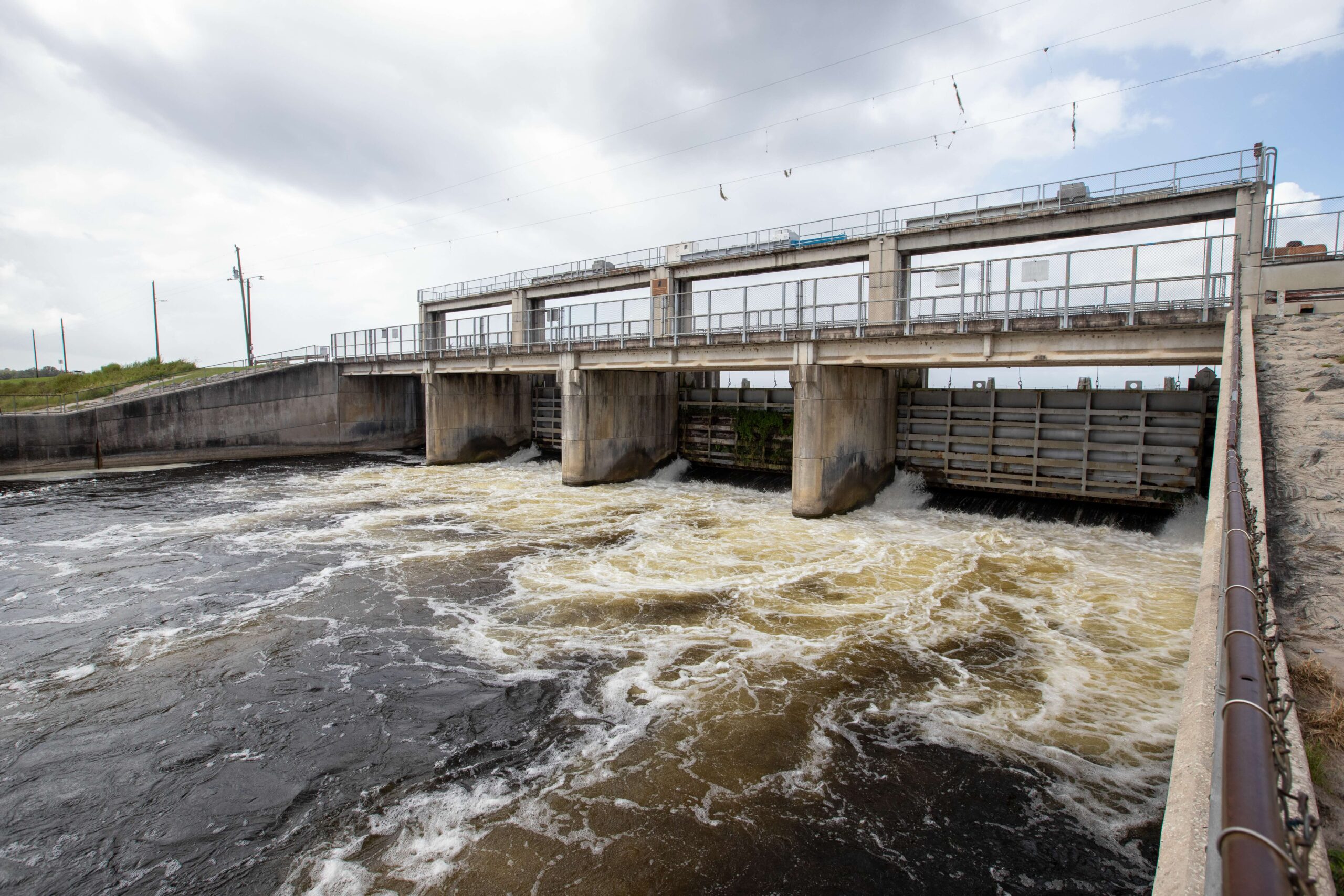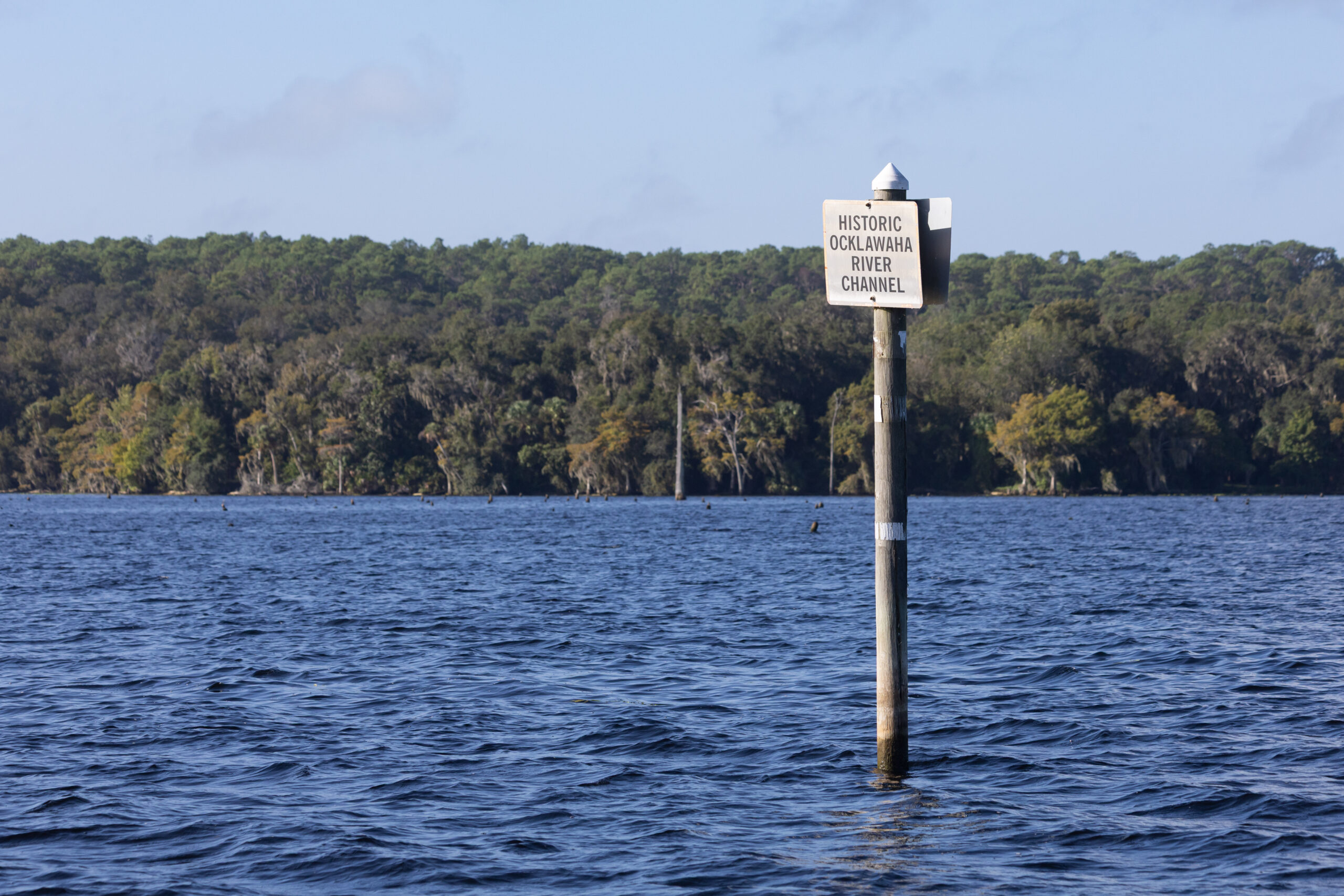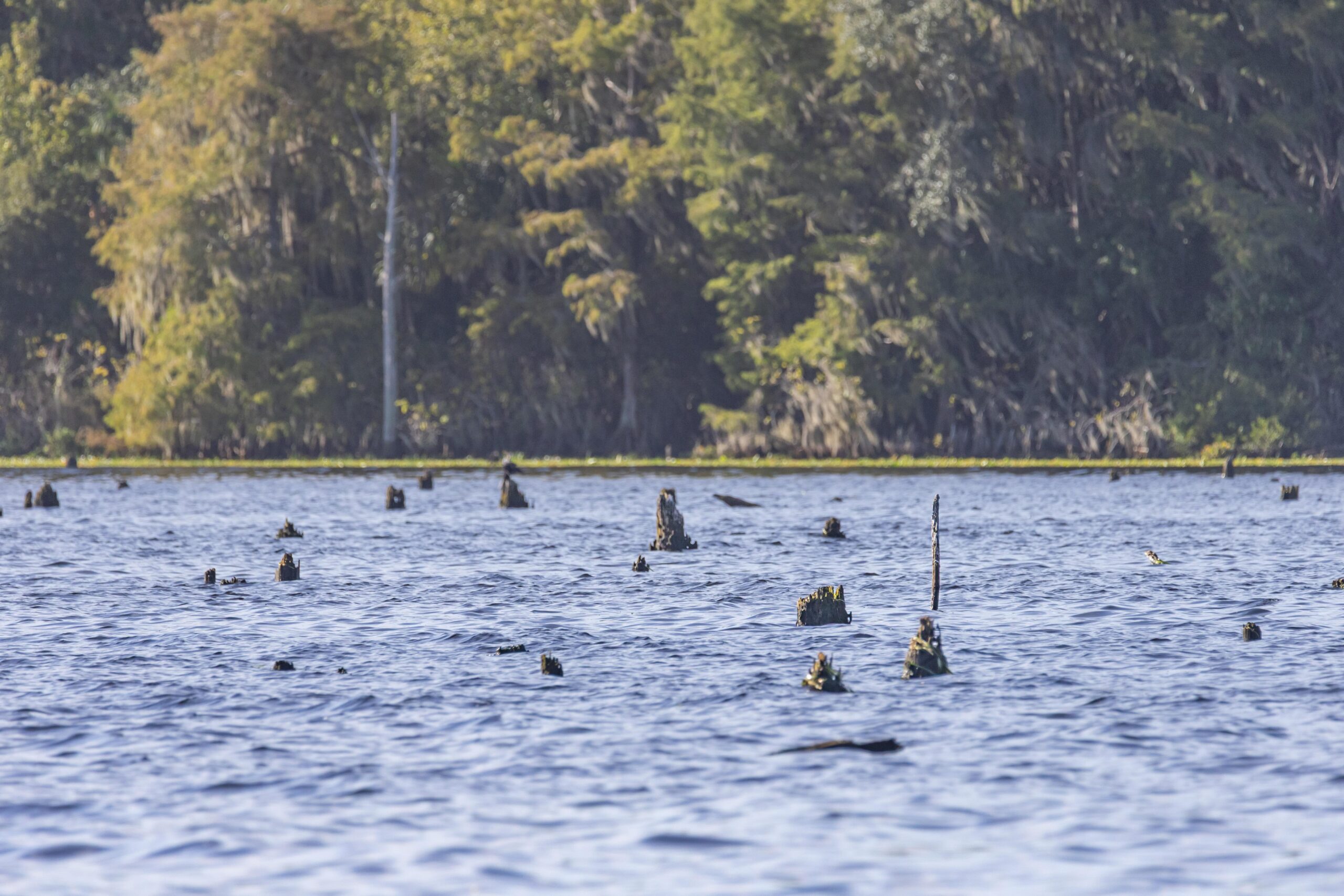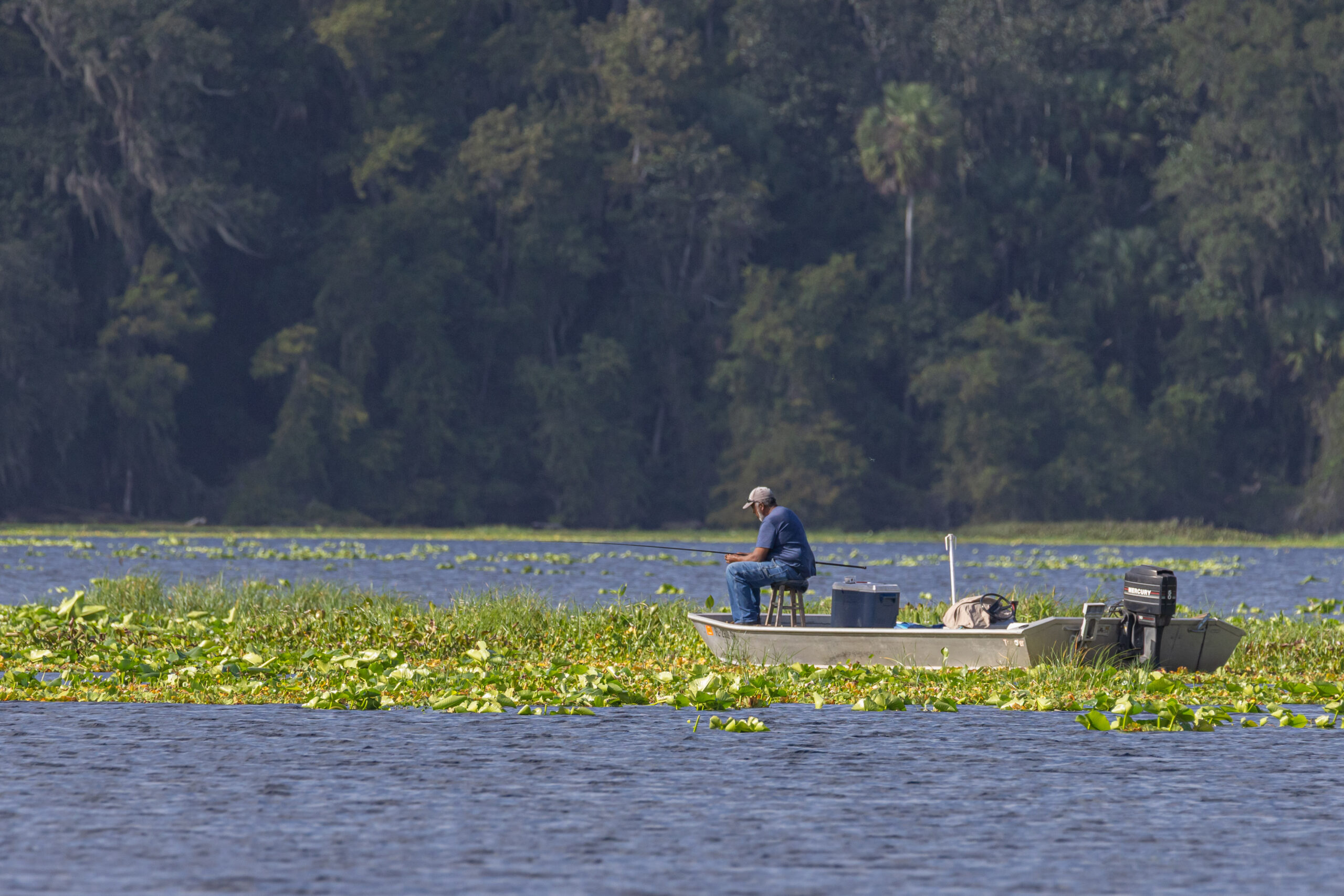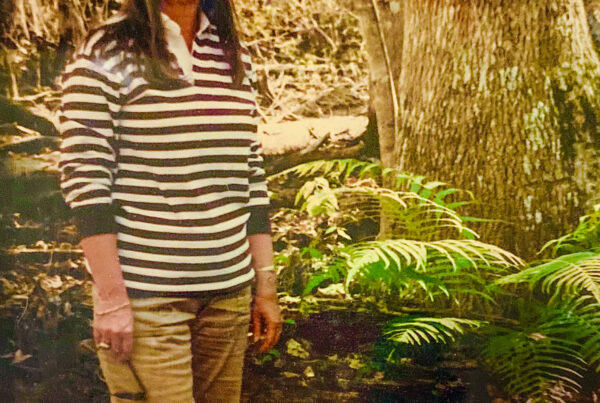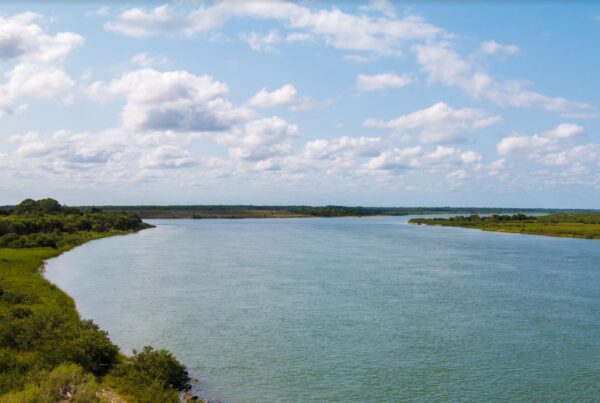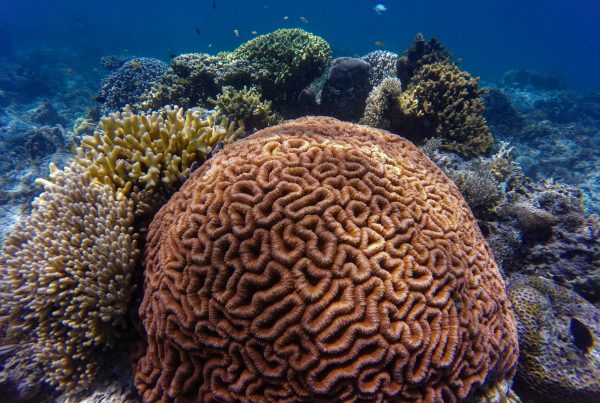As of October 10, 2025, the Florida Department of Environmental Protection (FDEP) has begun the 90-day drawdown of the Rodman Pool—lowering water levels from 18 to 11 feet above mean sea level by releasing water into the St. Johns River and estuary. Conducted every few years to “maintain the health of the reservoir,” this process is necessary because the Rodman Pool is a man-made, non-natural system that requires ongoing human intervention and maintenance to function. While intended as routine management, the drawdown also offers a rare glimpse of what a restored, free-flowing Ocklawaha River could look like through unique recreation opportunities.

Benefits of Restoration
The Rodman/Kirkpatrick Dam, constructed in the late 1960s as part of the now-defunct Cross Florida Barge Canal, flooded nearly 9,000 acres of forested wetlands, more than 20 springs, and miles of the Ocklawaha’s winding flow. The result was the Rodman “Reservoir”, a man-made impoundment that disrupted one of Florida’s oldest and most ecologically significant river systems.
Restoring the Ocklawaha River through the partial removal of the dam would reconnect the Ocklawaha, Silver, and St. Johns Rivers—reviving natural water flow, reopening fish migration routes, and reestablishing access to at least 20 freshwater springs now buried under the reservoir. It would also enhance recreation and tourism, boost local economies, and strengthen habitat for manatees, migratory fish, wading birds, and countless other species that depend on healthy river ecosystems.
A Glimpse of Restoration
During the drawdown, the natural flow of the river begins to re-emerge. Hidden springs bubble back to life, ancient cypress trees rise above the waterline, and wildlife thrives in the newly revealed floodplain forests. It’s a rare opportunity to see the river closer to the way it once flowed: clearer, shallower, and more connected to the land around it.
During this time, there are plenty of ways to explore and enjoy the changing landscape:
- Paddle the lowered river — With the reservoir reduced, the Ocklawaha’s winding channel is easier to follow. Paddlers can trace the river’s natural course, passing through stands of cypress and along stretches of open floodplain. It’s a good time to get a sense of how the river once moved freely through this part of Florida.
- Visit the re-emerging springs — The drawdown exposes more than a dozen freshwater springs that are usually submerged, including favorites like Cannon Springs. These clear, blue pools reveal the aquifer bubbling back to the surface and are worth visiting for their beauty and unique geology.
- Fish the concentrated waters — Lower water levels often make for productive fishing. Bass, bream, and catfish gather in the deeper channels and around spring runs, giving anglers a good chance at steady action. It’s also a great way to observe how fish respond when the river’s flow becomes more natural.
- Walk and explore — As the water recedes, new areas along the shoreline and floodplain become accessible. Short walks can reveal regenerating wetland plants, exposed cypress knees, and the textures of the landscape that are usually underwater.
- Watch for wildlife — The changing habitat draws in a variety of species. You may see wading birds feeding in shallow pools, turtles sunning on exposed logs, or manatees exploring the clear spring runs. The mix of open water and wetland during the drawdown supports a surprising amount of life.
- Photography and observation — The shifting waterline, exposed trees, and newly visible springs make for strong visual contrasts. Whether you’re taking photos or just taking it in, the drawdown offers a chance to see how dynamic this system really is.
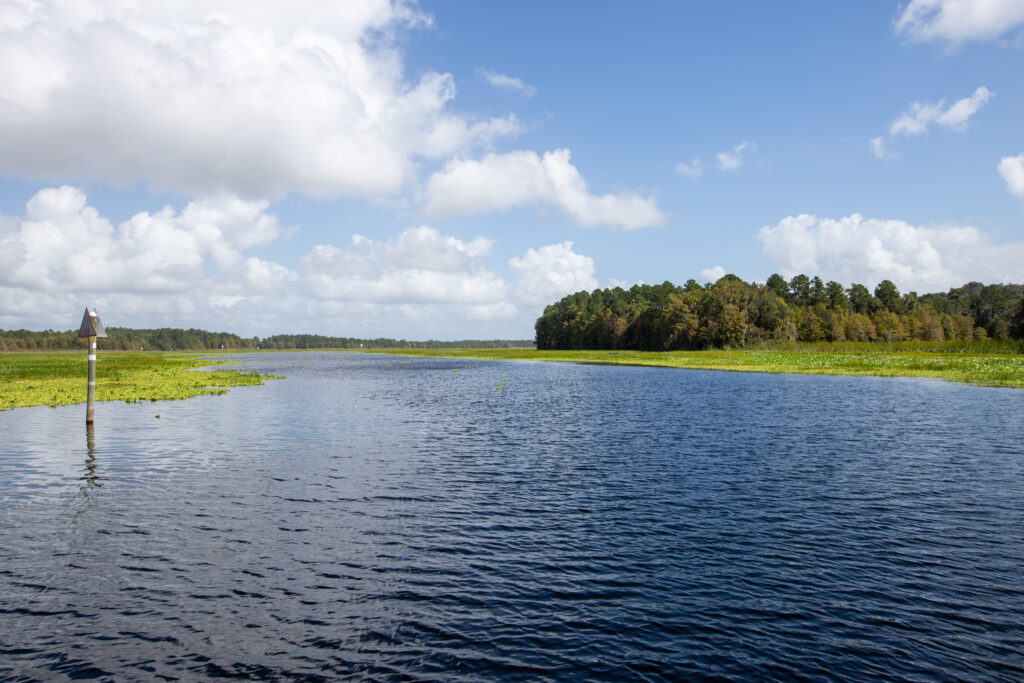
The drawdown is more than a management event—it’s a glimpse of what could be. Whether you paddle, fish, hike, or simply sit and watch the water flow, this is a time to reconnect with the Ocklawaha River’s wild heart and envision its future restored.
United for River Restoration
FWF is a proud member of the Reunite the Rivers Coalition, a diverse alliance of conservation organizations, businesses, and community leaders working together to restore the Ocklawaha River and reconnect it with the Silver and St. Johns Rivers. Together, we’re advocating for a future where Florida’s rivers flow freely once again—for wildlife, for people, and for generations to come.
Experience the Drawdown
Do you want to get out and experience the drawdown for yourself? You can sign up to be added to the waitlist for upcoming boat tours. These tours will occur in early 2026 allowing for an opportunity to travel the historic flow of the Ocklawaha River. Together with our coalition partners, we invite you to get up and close with the diversity of plants and wildlife that reemerge during the drawdown and to preview the benefits of restoration.

Join the waitlist today and be part of this exciting journey to reconnect with Florida’s wild spaces!



